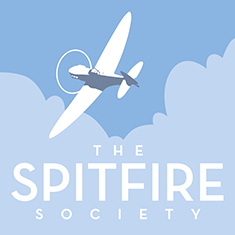Reginald Joseph Mitchell CBE, FRAeS (1895-1937)
R.J. Mitchell was one of Britain’s outstanding aeronautical engineers and designers during the interwar period. Responsible for the Supermarine seaplanes that won the Schneider Trophy outright for Great Britain in 1931 and of course the legendary Spitfire. It’s important to note that Mitchell led a team of people that were collectively behind these achievements and indeed had to continue his work after his premature death in 1937.
Born on 20 May 1895 at 115 Congleton Road, Butt Lane, Kidsgrove, Staffordshire and his parents were Herbert and Eliza Jane Mitchell. Attended the Queensberry Road Higher Elementary School and later Hanley High School where he cultivated his interest in flight by designing, making and flying model aeroplanes. Leaving school at 16 he embarked on an apprenticeship in the workshop and drawing office of Kerr, Stuart and Company in Stoke who designed and manufactured locomotives. Also attending night school to further study technical drawing, mechanics and mathematics, having a thorough grasp of theory and practical applications of them would be invaluable in the aeronautical challenges he would later face.
Supermarine Aviation Works Limited based in Southampton under the ownership of Hubert Scott-Pain required an assistant in 1917 and Mitchell was the successful candidate and promoted further within a year of joining.
Became Chief Designer and Engineer at only 24 years of age allowed him to marry Florence Dayson and start a family with his first and only child, Gordon being born in 1920. The Company was primarily a designer of flying boats from the First World War and in the post war world continued to build seaplanes and flying boats for the Royal Air Force and gain exposure and experience by competing in races such as the Schneider Trophy. Mitchell’s Sea Lion II which won the Trophy race held in Naples in 1922. Production military aircraft included the Sea Lion II, Scarab, Southampton, Scapa, Stranraer, Walrus, Sea Otter and operated by Britain, Japan, Australia, Spain, Argentina, Denmark, Turkey, Canada, France, Egypt; Ireland, New Zealand, Soviet Union and the Netherlands. Commercial services and opportunities weren’t ignored with the Sea Eagle starting the first scheduled passenger flying boat services which operated between Southampton and the Channel Islands from 1923. Designed a landplane for the Lympne light aircraft trials between 1924 and 1926, called the Sparrow but unsuccessful due to engine failures. Experimental or limited production aircraft he designed included the Scylla, Swan, Sea Urchin, Sea King II, Seal, Sheldrake, Nanok, Seamew, Air Yacht, Type 179, Type 224 and Type 318.
Mitchell’s first great achievement was the outright win of the Schneider Trophy for Great Britain in 1931 which involved the revolutionary designed series of Schneider seaplanes. The first was the S.4 which achieved a world speed record of 226mph in 1925 but unfortunately crashed in the same year off the coast of Baltimore in America whilst competing for the Trophy. The S.4 with a monoplane wing arrangement and monocoque fuselage was futuristic compared with the biplanes utilising structs and braces to create strength, it would be a further 12 years before the RAF had a monoplane fighter. By the time of the 1927 Trophy competition in Venice, Mitchell had incorporated changes from lessons learnt from the S.4 and the S.5 swept to victory achieving first and second positions at a speed of 281mph. Two years later he made more substantial revisions with the replacement of the Napier lion for a Rolls-Royce R engine, all metal construction and engine cooling through the use of airflow across the surfaces of the aircraft. The S.6 won the 1929 Schneider Trophy held over the Solent at a speed of 328mph. The 1931 competition was mired between a lack of financial support by the British Government and foreign competitors unable to compete due to to technical problems with their own aircraft. Britain fielded an S.6B which was a hastily improved aircraft with financial backing from Lady Houston, it won by default at a speed of 340mph over the Solent. This third win a row secured the magnificent Schneider Trophy outright for the Country, both the aircraft and the Trophy can be seen at the Science Museum in London.
The Spitfire would of course would become the design most associated with Mitchell but the design and initial production period were far from successful or straight forward compared with its later legendary following of pilots and public alike. The origins began with the Type 224 of 1931, unfortunately it lacked the streamlined presence of the Schneider Trophy seaplanes and struggled to achieve the performance parameters set by the Air Ministry. After the aircraft’s rejection in 1934, Mitchell and his team revised the designed under the designation Type 300 which would result in a whole Ministry specification based around it and become known as the Spitfire. The prototype K5054 took off for the first time from Eastleigh on 5 March 1936 under the control of Chief Test Pilot (Mutt) Summers. Both performance and production would remain troublesome up until the Battle of Britain but its advanced features meant that it could be continuously improved during the War to counter competition from Luftwaffe fighters. It should also be remembered that Mitchell was diagnosed with cancer in 1933 and was in considerable pain up until his death on 11 June 1937. The success and affection of his final creation is commemorated principally through the Solent Sky Museum in Southampton, the Science Museum in London, Tangmere Aviation Museum and The Spitfire Society.









